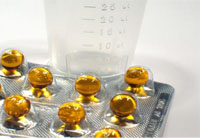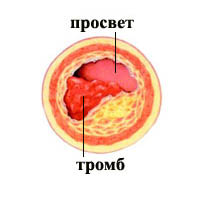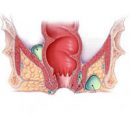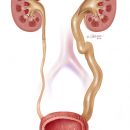The patient's life after transplantation is associated with the reaction of the rejection of the transplant organ. To combat transplant rejection in the postoperative period, drug treatment is applied.
Content
The concept of a transplant reaction reaction
Life after organ transplantation is related to the reaction of the transplant rejection. Transplantation of organs is accompanied by a transplant rejection reaction. According to modern ideas, a set of immunological reactions involved in the rejection process occurs in conditions when some substances on the surface or inside the cells of the transplanted organ are perceived by immune supervision as alien, t.E. differ from those that are present on the surface or inside their own cells of the body. These substances call tissue compatibility tissue antigens (histocompatibility). Antigen in the broad sense of the word is «not», Alien, substance capable of stimulating the body to develop antibodies. Antibody - generated by the body in the process of immune (protective) protein molecule reaction, intended for neutralization of a foreign substance that has fallen into the body.
Structural features of histocompatibility antigens are determined by genes almost the same as an individual hair color. Each organism inherits different sets of these genes from both parents and, accordingly, different antigen. The descendant also employs father, and histocompatibility maternal genes, T.E. He has antigens of tissue compatibility of both parents. Thus, parental histocompatibility genes behave like codominant, t.E. Equally active, alleles (gene options).
The donor fabric, carrying its own histocompatibility antigens, is recognized by the organism of the recipient as an alien. Inherent in each person, characteristic antigen tissue compatibility is easy to determine on the surface of lymphocytes, so they are usually called human lymphocyte antigens (HLA, from English. Human Lymphocyte Antigens).
Conditions for the reaction of the transplant rejection
For the occurrence of reaction reaction requires a number of conditions. First, the transplanted organ must be antigenic for recipient, t.E. have alien for him with HLA antigens stimulating immune response. Secondly, the immune system of the recipient must be able to recognize the transplanted body as foreign and provide the appropriate immune response. Finally, thirdly, the immune response should be effective, t.E. to achieve a transplanted organ and in any way to break its structure or function.
Ways to deal with rehabilitation of a transplant organ
There are several ways to overcome difficulties arising from bodies transplantation:
- deprivation of antigenicity transplant by reducing the amount (or complete elimination) of alien histocompatibility antigens (HLA) defining the differences between the tissues of the donor and the recipient
- Restricting the availability of HLA antigens of the transplant for recognizing recipient cells
- Suppression of the ability of the organism of the recipient to recognize the transplanted fabric as an alien
- Weakening or blocking the immune response response on the HLA antigen of the transplant
- Reducing the activity of those immune response factors that cause damage to the tissues of the transplant
 Several ways are applied to combat transplant rejection. In the postoperative stage, the leading role is played by immunosuppression. Immunodepression is to reduce or suppress (depression) of the immunological reaction of the recipient for alien antigens. This can be achieved, for example, preventing the action of.N. Interleukin-2 - substances secreted by T-helper cells (by helpers-assistants of the immune system), when they are activated during a meeting with alien antigens. Interleukin-2 acts as a signal to reproduction (proliferation) of the T-helper cells themselves, and they, in turn, stimulate the production of antibodies in the cells of the immune system.
Several ways are applied to combat transplant rejection. In the postoperative stage, the leading role is played by immunosuppression. Immunodepression is to reduce or suppress (depression) of the immunological reaction of the recipient for alien antigens. This can be achieved, for example, preventing the action of.N. Interleukin-2 - substances secreted by T-helper cells (by helpers-assistants of the immune system), when they are activated during a meeting with alien antigens. Interleukin-2 acts as a signal to reproduction (proliferation) of the T-helper cells themselves, and they, in turn, stimulate the production of antibodies in the cells of the immune system.
Among the many chemical compounds with a powerful immunosuppressive action, azatioprin, cyclosporine and glucocorticoids have found particularly widespread use during organ transfers.
Azatioprin, apparently, blocks the metabolism in the cells involved in the reaction of the rejection, as well as in many other dividing cells (including in bone marrow cells), acting, in all likelihood, the cell core and DNA contained in it. As a result, the ability of T-helper and other lymphoid cells to proliferation (reproduction) is reduced.
Glucocorticoids - steroid hormones of adrenal glands or synthetic substances similar to them - have a powerful, but nonspecifical anti-inflammatory effect and also oppress the immune reactions mediated by cells (T-cell).
A strong immunosuppressive means is cyclosporine, which is pretty selectively affecting T-helper cells, preventing their reactions to interleukin-2. In contrast to Azatiotric, it does not have a toxic effect on the bone marrow, t.E. does not break the blood formation, but damages the kidneys.
Suppress the rehabilitation process and biological factors affecting T cells; they include anti-lumphocytic globulin and anti-T-cell monoclonal antibodies.
In view of the pronounced toxic side effects of immunosuppressants, they are usually used in one or another combination, which reduces the dose of each of the drugs, and thus its undesirable effect.
Unfortunately, the direct effect of many immunosuppressive drugs is not specific enough, since they not only depress the reaction of the rejection, but also disturb the protective reactions of the body against other alien antigens, bacterial and viral. Therefore, a person getting similar drugs is defenseless to various infections.
Other reaction methods of reaction reaction are X-ray irradiation of the entire body of the recipient, blood or body transplantation, removal of the spleen or thymus, leaming of lymphocytes from the main lymphatic duct. Due to inefficiency or caused complications, these methods are practically not applied. However, electoral x-ray irradiation of lymphoid organs has proved its effectiveness on laboratory animals and in some cases used by human bodies.
The probability of transplant rejection reduces blood transfusion, especially when using solid blood of the same donor, from which the organ is taken. Since the same twins are an accurate similarity of each other, they possess natural (genetic) tolerance, and there is no rejection with the transflection of one of them.









